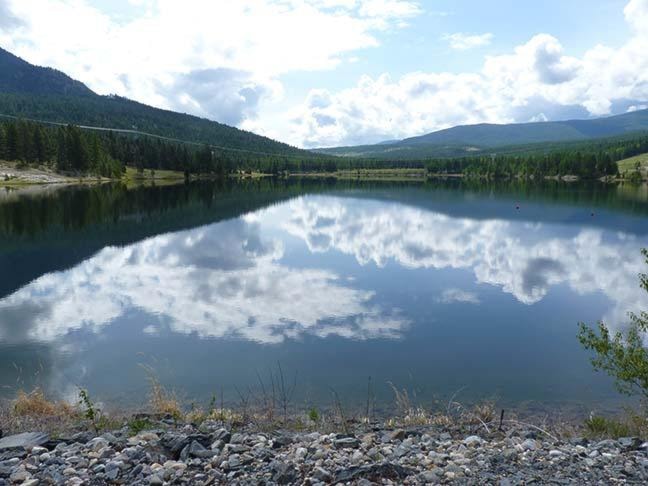We all know Cranbrook is built on a hill. Drive south from Baker Street towards the edge of town and you'll be driving uphill the whole way.
This situation is both a blessing and a curse for Cranbrook's pipes — the way we get our water, the city's water distribution system.
It's a blessing because the water naturally flows down through the pipes from the reservoir, outside Cranbrook in the southern Gold Creek area. We don't need to pump water through the pipes; we don't need to use energy to improve water pressure.
It's a curse because we actually need to reduce the water pressure in much of Cranbrook, and quite drastically at that. At Cranbrook's lowest point, where Sandor Rentals is located, if the pressure wasn't reduced, you'd turn on the shower and the water would blow a hole through your chest.
What's more, the water pressure means our pipes wear a lot faster. And that's expensive.
For the past three years, this reporter has spent one day each spring with City of Cranbrook Director of Public Works Joe McGowan. The first year, Joe took me to see where Cranbrook's water falls as snow and how it is collected. Year two, we looked at the wastewater system, the quite unique way the city gets rid of our sewage.
This year, Joe and I are taking a closer look at the pipes that deliver water to our homes.
In Cranbrook, there are 181 kilometres of pipes, 606 fire hydrants, 1,518 valves and 13 pressure reducing stations. The total value of our water system is $118,333,000.
Our water falls as snow before forming Gold Creek and Joseph Creek. The city collects our water supply from both creeks, storing it in Phillips Reservoir.
That's where Joe and I start our tour, standing at the top of the dam, looking down on the town below us. Except Cranbrook is so far below us that we can't see much of it; only the highest parts of the industrial area are visible.
Water gains pressure the lower in elevation it flows, so the location of the reservoir is significant.
"The town is a long ways below us. We start off with all this energy sitting here. The challenge is to contain it. We want to reduce this energy while still giving the customer the water pressure they need," explains Joe.
Measuring the energy in water is a bit like measuring the energy in your vehicle's tires – both are measured in psi, or pounds per square inch.
When it gushes out of Phillips Reservoir and starts its journey to Cranbrook, our water is around 40 psi.
By the time it reaches the first homes in Cranbrook, in the Highlands neighbourhood, the pressure is up to 120 psi.
Engineers calculate the pressure in a pipe by looking at the difference in elevation between the reservoir and the home. For instance, the elevation of the reservoir is 3,583 feet. My house is at 3,225 feet elevation. So if the city did nothing to reduce the pressure in the water, when I turned on my kitchen tap the water would gush out at 155 psi.
That would be bad, Joe points out.
"If the pressure goes above 80, most of the plumbing fixtures in your house wouldn't last very long," he says.
"At 260 psi, the water would strip all the flesh off your hand. Your dishwasher would explode in three or four seconds."
Thankfully, the city goes to great lengths to make sure the pressure is reduced to within the comfortable range of 42 to 65 psi.
Pick up a copy of Tuesday's Townsman for the second part of "Under Pressure", where we look at how the city reduces the pressure in our water mains, and some of the problems with our pipes.
